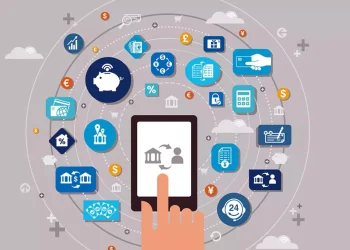
Banking on tech to bridge the Bharat-India gap
Nearly 65% of India’s population resides in rural areas as of 2021. It is no wonder then that most banks are now betting big on Tier III towns or ‘Bharat’ as it is sometimes known. What’s adding to this are factors like RBI’s guidelines on digital banking units (DBUs) in rural areas, agri-based reforms, investment in rural infrastructure, etc. While the many layers of the India stack and Aadhar transformed banking in the country, fast-growing fintech firms democratized access across a large user base with the launch of digital wallets and mobile money. This Indian experience offers several lessons that can be replicated in other emerging markets and developing economies. Going forward, financial inclusion will be essential to bridge the Bharat-India divide and build a robust economy with strong growth indicators where technology will be a catalyst not only for banking as a business but banking as a social responsibility. And here’s what I will be keeping an eye on to accelerate digital financial inclusion:
Micro ATMs at customer service points (CSPs)
Metros in India have 52 ATMs per one lakh population, and rural areas have just nine ATMs per one lakh population. A number of factors contribute to this disparity — high set-up and infrastructure costs, low usage stemming from fear or lack of awareness, inconsistent availability of electricity, theft, vandalism etc.
Enter micro-ATMs, designed to bridge the banking gap for rural Indians who are still largely cash dependent. While business correspondents (BCs) or local bank representatives continue to dominate the rural setup, last mile is the focus for financial inclusion especially in a country like India where distance between a bank branch or an ATM and a village can be far and wide. But in addition to BCs, it will be interesting to see micro ATM services take off at CSPs like grocery or kirana stores, etc. that can authenticate the customer and offer regular banking services like cash withdrawals, deposits, and transfers. Installing micro ATMs thus will not only help rural populations but also increase a merchant’s income by way of a fixed commission for every transaction. For the customers, Micro ATMs will be easy, secure, and quick as exchanging cash, creating seamless payment and banking experiences.
Scaling the digital rupee
Coming with the additional benefits of sovereign guarantee, enhanced security, no currency loss, and minimal transaction, and operational costs, the Reserve Bank of India’s (RBI’s) Central Bank Digital Currency (CBDC) or digital rupee will revolutionize India’s wholesale and retail sectors. While the initial response has been encouraging, how soon the scale and scope will be expanded from a few cities to throughout the country, will be critical. (On day one of the pilot launch, the nine identified banks undertook 48 trades aggregating Rs 275 crores.) A key difference between UPI and CBDC is that we now have more transparency in the movement of money as transactions will not take place on the bank’s server like UPI, wallet, National Electronic Funds Transfer (NEFT) or Immediate Payment Service (IMPS), but will be executed and recorded on the RBI’s blockchain. This is a step in the right direction to help India realize it’s digital payment ambitions.
Engagement in local languages for customized banking
The language barrier along with other communication problems in dealing with customer care for rural banking users is an urgent need waiting to be addressed. In a multi-lingual, multi-dialect country like India, AI and voice commands must be harnessed to deliver superior customer service and ensure language is no longer a challenge to adopt digital and mobile banking. While initial results from startups like Vernacular.AI are helping push the needle in the right direction, with more native language speakers coming online, scaling such solutions effectively will be vital. Creating awareness around the importance of saving and investing via simple messages in familiar languages across the country will also help increase financial literacy.
Redirect cost saves back into technology
Implementation of digital KYC, and UPI-enabled online transfers have led to cost saves in operational costs and infrastructure setup. These savings must be routed back into a bank’s technology budget to further improve customer service and experience. The bank of today and the future will be driven by technology and AI and investment in technology must be made to meet the increasing demand.
In a large and complex economy like India, access to digital infrastructure has been revolutionary. And now the focus must shift to developing the rural banking ecosystem and financial product design to suit the rural population that has traditionally and historically been under-served by banks. Hopefully, that day is not far when rural India will lead the way in making India a digital and cashless economy.
Source / Credits / Reference: Times of IndiaRef URL: https://bit.ly/3KHw7m8
Back to blogs
Blog Views : 467 26-02-2023

